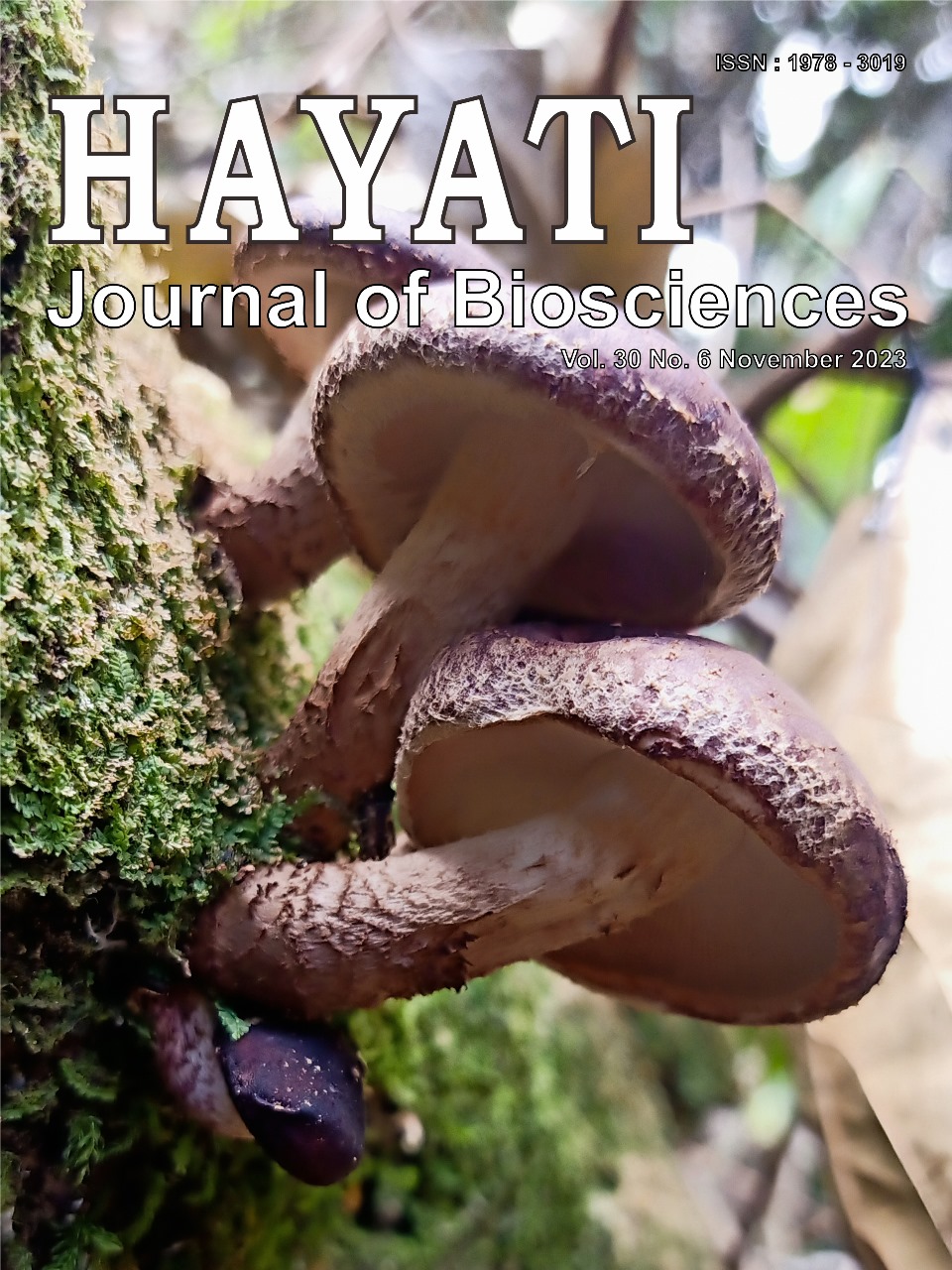Genetic Diversity and Population Structure Analysis of Potato Somaclones
Abstract
Cultivated potato varieties are tetraploid and vegetatively propagated. Therefore genetic improvement for new traits is less effective through hybridization. The mutation is considered an alternative method for crop improvement of those varieties. This study aimed to evaluate the effects of gamma-ray irradiation on increasing genetic diversity among the somaclones and the changes in population structure. Forty-four somaclones were used as observed materials. The population was grown in a screen house using a completely randomized design with genotype (somaclone) as a single factor. Thirteen qualitatively and quantitatively morphological characters were observed. Six SSR markers were used for analyzing the population structure. The selection process was based on a weighting method divided into quartiles. Selected numbers were taken from quartile 3. Morphological analysis of stems and leaves resulted in five different somaclones, with significant differences in anthocyanin appearance and intensity of the green color of the leaflets. Diversity criteria based on quantitative characteristics showed a high level of diversity with a high heritability for tuber weight, length, and diameter and a moderate heritability for tuber number. Analyzing the population structure has offered insight into how gamma irradiation affected the somaclones. As a result of the selection, 12 somaclones met the requirements to serve as seed sources for field testing. It is expected that the results of this study will provide information about the diversity caused by gamma-ray irradiation treatment on potato somaclones and a method for improving the efficiency of the initial selection of potato populations.
Downloads
Copyright (c) 2023 Nina Agusti Widaningsih, Ika Roostika, Dwinita Wikan Utami, Awang Maharijaya, Kusmana, Usep Jenudin, Sobir

This work is licensed under a Creative Commons Attribution-NonCommercial 4.0 International License.
HAYATI J Biosci is an open access journal and the article's license is CC-BY-NC. This license lets others distribute, remix, tweak, and build upon author's work, as long as they credit the original creation. Authors retain copyright and grant the journal/publisher non exclusive publishing rights with the work simultaneously licensed under a https://creativecommons.org/


















.png) IPB University
IPB University Department of Biology
Department of Biology The Indonesian Biological Society
The Indonesian Biological Society 

